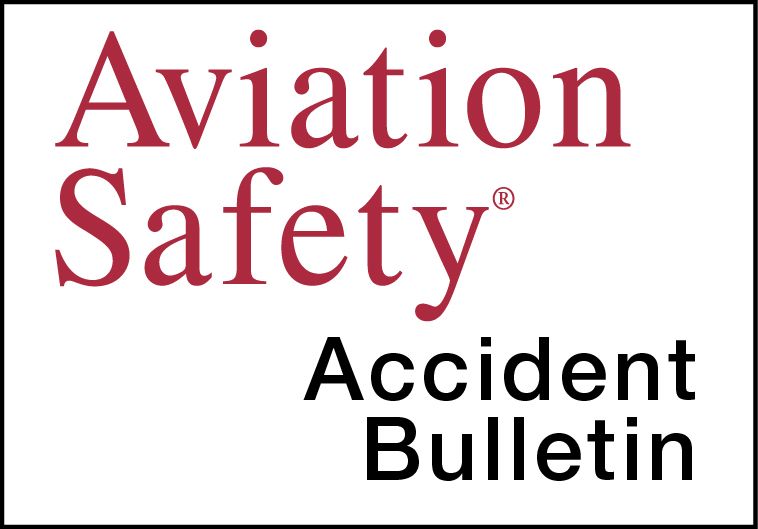AVweb’s General Aviation Accident Bulletin is taken from the pages of our sister publication, Aviation Safety magazine. All the reports listed here are preliminary and include only initial factual findings about crashes. You can learn more about the final probable cause on the NTSB’s website at www.ntsb.gov. Final reports appear about a year after the accident, although some take longer. Find out more about Aviation Safety at www.aviationsafetymagazine.com.
September 15, 2019, Gulf of Mexico
Piper PA-46-350P Malibu Mirage
At 1146 Central time, the airplane lost engine power while maneuvering and the solo private pilot was forced to ditch. Visual conditions existed. The flight originated in Titusville, Fla., Ozona, Texas, as its destination.
While en route and after crossing the Gulfport, Mississippi, Terminal Radar Service Area at 10,500 feet MSL, he initiated a slow descent and proceeded south toward the mouth of the Mississippi River, descending to 1500 feet. He then configured the airplane for climb but the engine did not respond to power application and the airplane began losing altitude. He was unable to restore power and declared an emergency to ATC before ditching. The pilot was in the water for about an hour before being rescued by a U.S. Coast Guard helicopter.
September 20, 2019, Lancaster, Texas
Vans RV-10 Experimental
The airplane sustained substantial damage at about 1940 Central time during a forced landing after a partial loss of engine power shortly after takeoff. The airline transport pilot and the three pilot-rated passengers were not injured. Visual conditions prevailed.
According to the pilot, he flew the airplane uneventfully for about an hour, practicing stalls and ILS approaches, then made a full-stop landing to refuel. After refueling, the pilot took off again for more practice maneuvers. After about 40 minutes of uneventful flying, the pilot performed a touch-and-go landing and, on liftoff, it sounded like the nose wheel was vibrating. The engine backfired and power began decreasing. The pilot confirmed throttle, propeller and mixture control positions and the boost pump was on. The pilot decided there was insufficient runway remaining to land, so he climbed, raised the flaps and increased airspeed to 95-100 knots even as engine power continued to decrease.
The pilot began a gentle turn (10-15 degrees) back to the airport at about 70-75 KIAS and 500-700 feet AGL but determined he could not make the runway, so he landed in a farmer’s field. The airplane slid onto the field, the nose wheel sheared and the main landing gear collapsed.
September 29, 2019, DeLand, Fla.
Cessna 421 Golden Eagle
At about 1600 Eastern time, the airplane was substantially damaged when it impacted trees and terrain. The commercial pilot, pilot-rated passenger and aft-seated passenger were fatally injured. Visual conditions prevailed.
The airplane had not flown or been inspected for several years. The owner purchased the airplane on June 21, 2019, with plans to repair and sell it, and hired a mechanic to make it airworthy. The mechanic had not completed necessary repairs nor completed an annual inspection at the time of the accident. The owner later reported he was not aware the airplane was being flown by anyone when the accident occurred. According to ATC radar data, the airplane took off and was observed performing maneuvers at 2500 feet MSL. While returning to the departure airport, the airplane descended until it reached 1000 feet, then made a left turn before radar contact was lost.
A witness heard the airplane fly over at an altitude of about 2000 feet, and described the engine sounds as “rough.” About 10 minutes later, he observed the airplane coming back at an altitude of 1000 feet; engine sounds included “sputtering and backfiring.” A second witness heard the accident airplane fly overhead, sounding very loud. He said both engines seemed to be running at idle, and the airplane was flying “very slow and very low” with flaps and landing gear retracted. Suddenly the airplane rolled to the left and began to “spiral downward” three times before descending below the tree line.
The airplane came to rest in a heavily wooded area about four miles from the departure airport in an upright position. A post-crash fire destroyed the wing assemblies outboard of the engine nacelles. Both main landing gear were extended and wing flaps were retracted. Both engines remained intact and displayed impact and thermal damage signatures. All 12 cylinders were inspected using a lighted borescope and displayed normal operating and combustion signatures. All six propeller blades displayed some combination of minor impact damage, S-bending, twisting and aft bending deformation, plus significant polishing of the cambered side.
The 27-year-old commercial pilot held single- and multi-engine airplane ratings and an instrument rating. He also held a flight instructor certificate with an airplane single-engine rating. The last entry in his logbook was dated May 29, 2019. The logbook did not show any logged time in a Cessna 421.
This article originally appeared in the December 2019 issue of Aviation Safety magazine.
For more great content like this, subscribe to Aviation Safety!



































